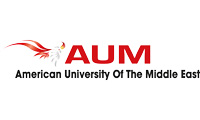
Emphasising social interaction and tailored lesson plans for online learning has helped the American University of the Middle East prepare for life in the digital age
The commitment of faculty and the trust of students were key factors in the American University of the Middle East’s smooth transition to online learning, according to the university’s president, Professor Georges Yahchouchi, who says teachers and learners at the Kuwait-based institution have embraced the move online in response to the Covid-19 crisis.
“We had a high level of readiness while moving online. We had already been using instructional technologies to support teaching and learning in face-to-face mode. Faculty and students were already familiar with learning management systems and e-resources,” says Professor Yahchouchi. “Given that AUM is a technology- and innovation-driven institution since its foundation, the university successfully pioneered the online shift and inspired other universities in the country.”
To prepare for the move online, AUM faculty made efforts to redesign syllabi and rethink pedagogy and learning activities. There was a focus on ensuring a “social presence” in the virtual classrooms, with activities to encourage interaction. Assessments were also adapted to suit the new learning environment.
“One of the mistakes someone can make is to try mirroring or exporting what used to be done on campus directly to online. This simply doesn’t work,” says Professor Yahchouchi. “We need to reconsider the learning activities and the framework of learning assessment, and make the best use of technology. The design of the assessment itself has a major role in ensuring academic integrity.”
The university sought to engage students through an online campaign, including live chat and social media channels, where they could ask questions and raise concerns. Campus events and student services – including the Tawteen Career Center and alumni services – were also moved online in an effort to maintain a feeling of campus culture.
Professor Yahchouchi says the transition had helped students gain valuable skills, including time management, accountability and how to work effectively as independent learners. “Most importantly”, Professor Yahchouchi says, they were taught to develop “resilience to overcome difficulties. They will be the generation who overcome all kinds of obstacles.”
While the pandemic was a “crisis”, Professor Yahchouchi feels that “crisis is simply a turning point leading to a change”. He sees an opportunity for “disruptive technologies” to help the higher education sector evolve. “With the increased demand for online learning platforms and tools, the market is quickly growing and becoming more competitive, and consequently the smartness and the quality of these tools is being enhanced. Universities will be more data-driven in the future, using the insights they have gained to make informed decisions that best serve students in the digital age of higher education,” Professor Yahchouchi says.
“With instructional technologies fully embedded in our teaching and learning practices, post Covid-19, faculty will have the greater responsibility to turn every classroom into a space of profound interaction, discussion and active learning. Instructional technologies will provide a better time management for faculty and staff. The gate will widely open to integrate artificial intelligence and big data and to focus on the value of the students’ data that we may get from the use of instructional technologies, especially those related to learning achievements, learning difficulties, and preferences,” Professor Yahchouchi says. “Such data will allow us to provide better service, better advice and better support to students in reaching their educational objectives.”
Higher education institutions can learn many lessons from the pandemic. They have a unique opportunity to reinvent learning and find new ways to integrate data and disruptive technologies into teaching. The universities that can adapt to a constantly changing world will reap the rewards.
Find out more about AUM.
